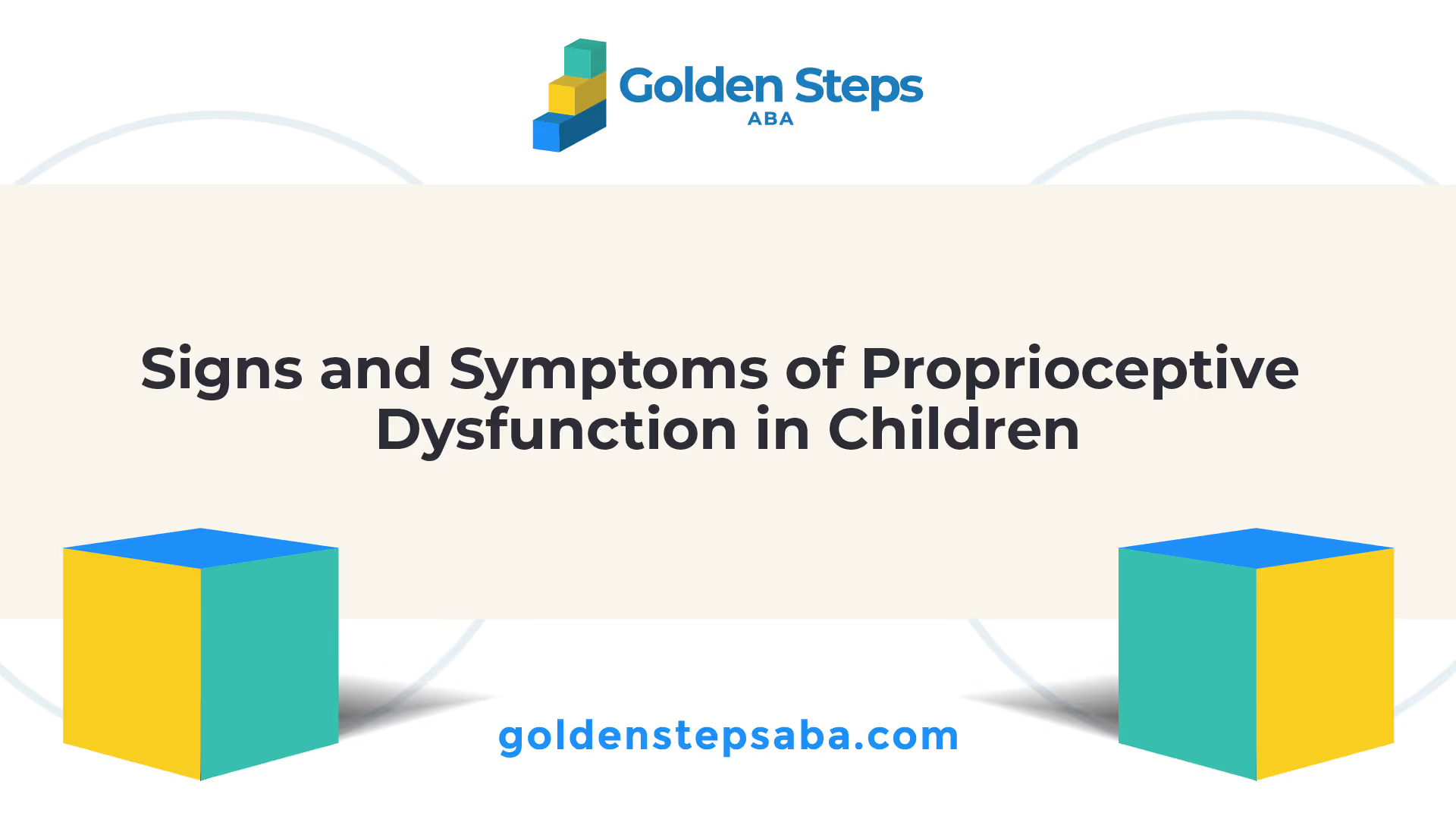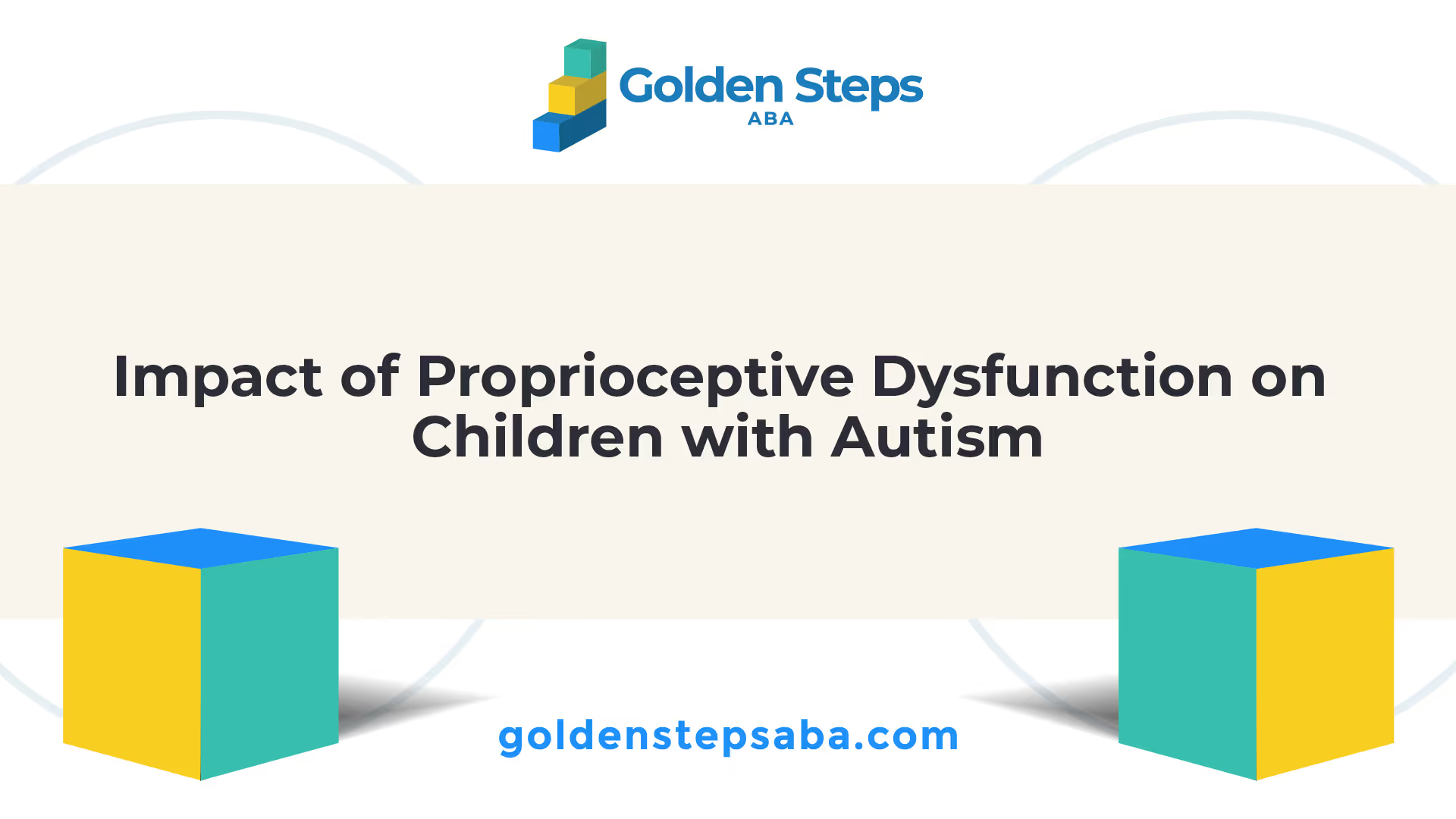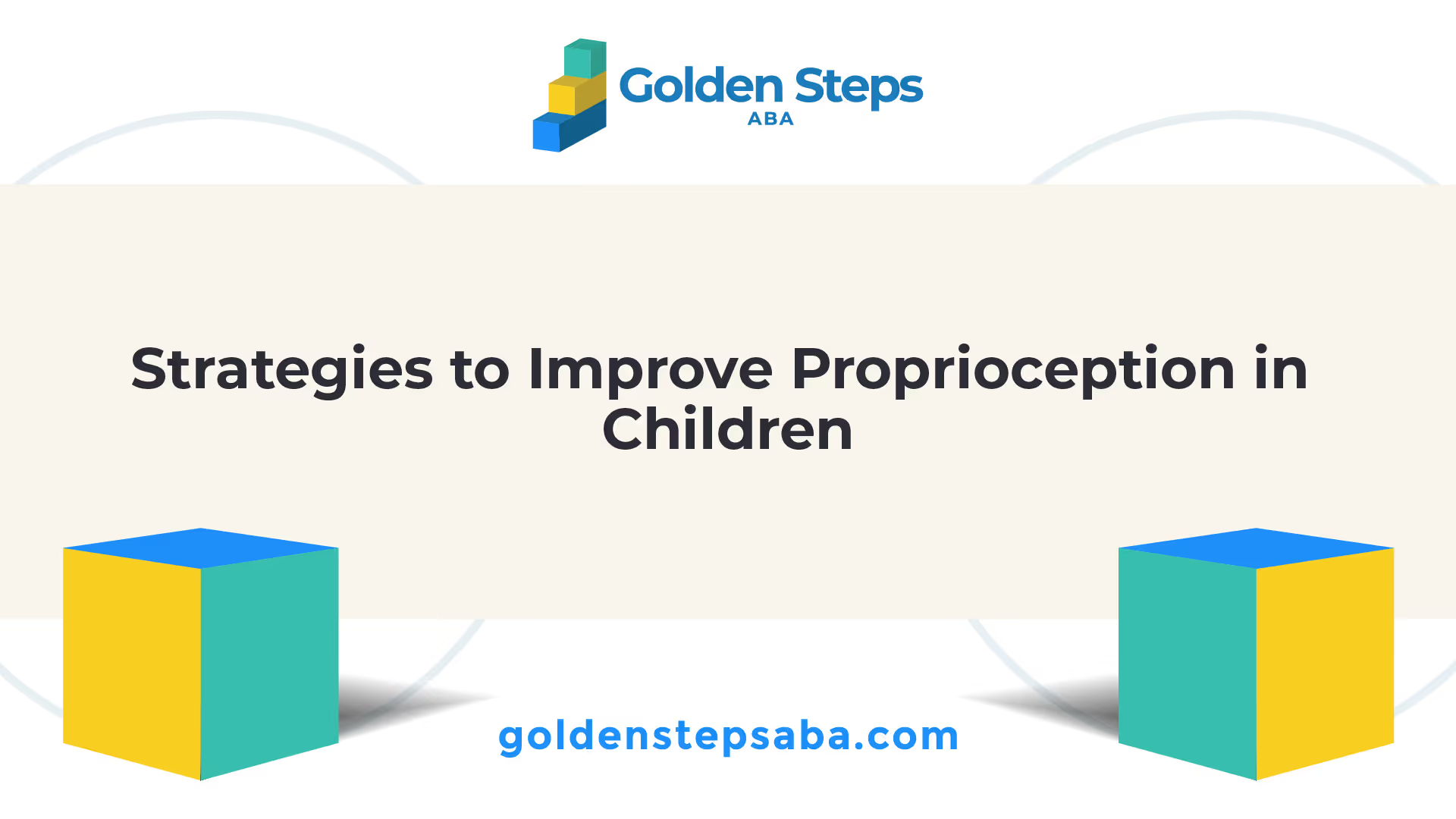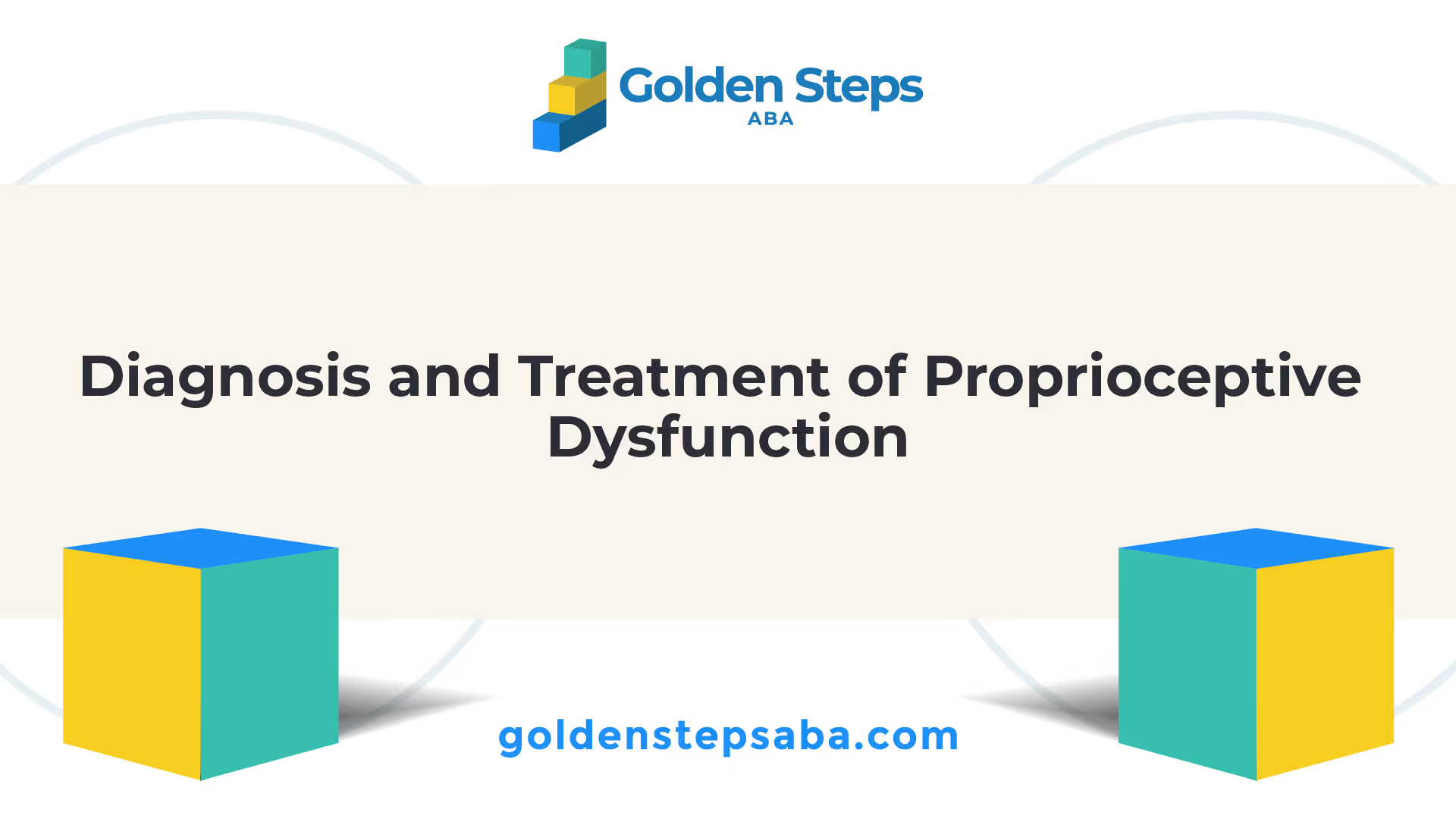Understanding Proprioception and Autism
Delving into the realm of sensory processing, proprioception plays a pivotal role in how children interact with their surroundings. It's often referred to as the "sixth sense" and is crucial for self-regulation, coordination, posture, body awareness, focus, and speech in children [1]. This sense provides the brain with information about the body's position in space, the movement of body parts, and the muscle strength needed for various activities like playing the piano, handwriting, and sports.

The Link Between Proprioception and Autism
When examining the connection between proprioception and autism, it's important to understand how proprioceptive input is processed. Sensory receptors in the skin, muscles, and joints receive proprioceptive input when activated. This information is then transmitted to the brain's arousal center, involving three major components of the brain (the cortex, limbic system, and cerebellum). This process impacts a child's alertness level, learning, and focused attention.
Autism spectrum disorder (ASD) often involves sensory processing difficulties, and proprioception is one of the senses that can be affected. For children with autism, issues with proprioception can affect their motor skills, coordination, and ability to interact with their environment, leading to challenges in daily activities.
To delve deeper into the component of proprioception within the context of autism, refer to our dedicated articles on proprioception and autism, what is proprioception and its importance, proprioception autism examples, and is poor proprioception a symptom of autism.
By gaining a comprehensive understanding of proprioception and its link to autism, we can better address the question, 'what causes poor proprioception in children?', and explore effective strategies and interventions to support children in this aspect.
Causes of Poor Proprioception in Children
Understanding the factors contributing to poor proprioception in children is crucial for recognizing and addressing proprioceptive dysfunction.
Factors Contributing to Proprioceptive Dysfunction
The proprioceptive system involves the brain, muscles, and nerves. Any injuries or conditions that adversely affect these can lead to long-term or permanent proprioception impairment. Age-related changes can also impact proprioception, although this is less relevant for children. Still, the risk of proprioception loss increases as an individual ages due to natural changes in the nerves, joints, and muscles.
In addition to these general factors, certain conditions are often associated with proprioceptive deficits, specifically affecting muscle control and voluntary movement. For instance, conditions such as cerebral palsy, autism, Down syndrome, and developmental disorders have been linked to issues with proprioception.
Specifically, in the context of autism, proprioceptive dysfunction can lead to sensory seeking behaviors, poor motor planning or body awareness, poor posture control, balance issues, uncoordinated movement, and clumsiness. Both over-responsivity and under-responsivity to sensory stimuli may occur.
Moreover, Sensory Processing Disorder (SPD), a condition characterized by the inability to effectively use sensory information, can also contribute to proprioceptive dysfunction. This condition impacts daily activities and functional abilities, but therapies like sensory integration can help improve modulation of sensory systems, self-regulation, and motor planning ability.
Understanding these factors provides a basis for recognizing and addressing proprioceptive dysfunction in children. For more information on the relationship between proprioception and autism, please visit our article on proprioception and autism.

Signs and Symptoms of Proprioceptive Dysfunction in Children
Understanding the complexities of proprioception is crucial in recognizing its dysfunction in children. Proprioceptive dysfunction may manifest in several ways, with varying signs and symptoms that parents and caregivers need to be aware of.
Recognizing Proprioceptive Dysfunction
Children experiencing proprioceptive dysfunction may exhibit a range of behaviors and characteristics that could indicate a need for further assessment or intervention. According to IntechOpen, children who are clumsy, uncoordinated, and display sensory seeking behaviors are often experiencing proprioceptive dysfunction. These behaviors may include pushing, writing too hard, or playing rough.
Furthermore, poor motor planning or control, such as difficulty navigating stairs or riding a bike, are common signs of proprioceptive dysfunction. Similarly, poor posture control, balance issues, uncoordinated movement, and general clumsiness may also be observed.
Children with proprioceptive dysfunction may show either over-responsivity or under-responsivity to sensory stimuli. For instance, they may react strongly to light touch (over-responsivity) or may not react at all to pain or temperature changes (under-responsivity).
Other signs of proprioceptive dysfunction include:
- Sensory seeking behaviors
- Difficulty with grading of movement
- Difficulty maintaining an optimal state for learning and focused attention
The signs and symptoms of proprioceptive dysfunction can have a significant impact on a child's daily life, affecting their ability to participate in activities, their learning, and their overall functioning. Parents and caregivers who observe these signs should seek professional advice to confirm the diagnosis and explore potential treatment options.
For more information on proprioception and its importance in children, particularly those with autism, check out our articles on proprioception and autism, what is proprioception and its importance, and proprioception autism examples.
By understanding what proprioceptive dysfunction looks like and knowing how to recognize it, parents and caregivers can better support their children and seek appropriate interventions when necessary. For more on how to manage and improve proprioception in children, refer to our articles on eight forms of proprioceptive input.

Impact of Proprioceptive Dysfunction on Children with Autism
Proprioceptive dysfunction can significantly impact children with autism, affecting their day-to-day lives and overall well-being. It's crucial to uncover and understand the challenges these children face to provide them with the appropriate support and interventions.
Challenges Faced by Children with Autism
Proprioception, often referred to as the sixth sense, is essential for good muscle control, voluntary movement, self-regulation, coordination, posture, body awareness, focus, and speech in children [1]. Conditions like autism are often associated with proprioceptive deficits, affecting control over movements.
Children with poor proprioception may exhibit a range of challenges, such as sensory seeking behaviors, poor motor planning and body awareness, poor posture control, balance issues, uncoordinated movement, and clumsiness. They may also display both over-responsivity and under-responsivity to sensory stimuli [3].
These challenges can manifest in various ways. For instance, a child with poor proprioception might have difficulty gauging the force needed to pick up a glass without dropping or smashing it. They might struggle with tasks that require fine motor skills, like buttoning a shirt or tying shoelaces. In a social setting, these children might stand too close to others because they cannot accurately judge personal space. You can find more proprioception autism examples in our dedicated article.
Additionally, children with autism and proprioception issues may struggle with Sensory Processing Disorder (SPD). SPD is the inability to receive and efficiently use sensory information, impacting daily activities and functional abilities.
Understanding these challenges is the first step towards finding effective strategies and interventions to help these children. In our sections on strategies to improve proprioception in children and diagnosis and treatment of proprioceptive dysfunction, we delve into potential solutions and therapies to help manage and improve proprioception issues in children with autism.

Strategies to Improve Proprioception in Children
With a deeper understanding of what causes poor proprioception in children, especially those with autism, the next step is exploring various strategies that can help improve proprioception. This section will delve into proprioceptive activities and therapies, aiming to provide practical solutions for families dealing with proprioceptive dysfunction.
Proprioceptive Activities and Therapies
Proprioceptive input can be provided through a variety of activities that engage the muscles and joints. These activities stimulate the sensory receptors in the skin, muscles, and joints, which provide information about movements and body position to the brain's arousal center [1].
Activities such as trampoline jumps, wall pushes, squeezing a ball, climbing, crawling, and balance board activities can help children regulate their proprioceptive input and improve motor planning abilities [3]. Other proprioceptive activities involve heavy muscle work tasks such as pushing, pulling, carrying heavy objects, or weight-bearing tasks.
Moreover, deep pressure activities like tight hugs or hugging oneself into a tight ball can also be beneficial. These activities are known to help children stay calm, focused, and ready to engage.
Here are some examples of proprioceptive activities:
In addition to these activities, providing proprioceptive input in a learning environment can enhance a student's engagement and learning. This can lead to improved emotional well-being and an enhanced ability to learn.
For a more comprehensive understanding of proprioception and its role in autism, you can explore our articles on what is proprioception and its importance, proprioception autism examples, and is poor proprioception a symptom of autism.
In conclusion, understanding the root causes of poor proprioception and implementing the right strategies can significantly improve the lives of children with autism. By incorporating proprioceptive activities into their daily routines, parents and caregivers can help their children better understand and navigate their world.

Diagnosis and Treatment of Proprioceptive Dysfunction
Diagnosing and managing proprioceptive issues is a crucial step in addressing the question of 'what causes poor proprioception in children?' and how to tackle it.
Assessing and Managing Proprioception Issues
Diagnosing proprioception disorder involves a variety of tests designed to evaluate an individual's proprioceptive abilities. Some of the common tests include the TTDPM Test, JPR Test, Thumb Finding Test, Distal Proprioception Test, Sequential Finger Touching, Romberg Test, and Field Sobriety Test. The Romberg Test is one of the most common tests for proprioceptive disorder, where the individual stands with their eyes closed and heels together for 30 seconds to observe any signs of imbalance or swaying [5].
It's important to note that while these tests can be helpful in diagnosing proprioception disorder, the measurement of proprioception is presently not well-developed. Proprioception can only be confidently measured in a laboratory setting, using complex computer-interfaced equipment. There is presently a lack of valid, reliable and responsive tools and outcome measures to quantify proprioception deficits in a clinical setting.
Once a diagnosis of proprioceptive dysfunction is made, treatment generally involves exercises and therapy designed to enhance coordination and balance, in addition to addressing the underlying cause of the disorder. Proprioception training can help reduce the risk of injuries and muscle deterioration [5].
An intact sense of proprioception is crucial to learning a new skill. Without the appropriate integration of proprioceptive input, individuals would struggle with tasks such as painting, driving, typing, or dancing. It's important to remember that while proprioceptive dysfunction can be challenging, it can also be managed and improved with the right strategies and support.
For more information about proprioception and autism, visit our articles on proprioception and autism, what is proprioception and its importance, and eight forms of proprioceptive input.
References
[1]: https://www.occupationaltherapy.com.au/proprioception/
[2]: https://www.healthline.com/health/fitness/proprioception
[3]: https://www.intechopen.com/chapters/75427
[4]: https://sensory-processing.middletownautism.com/sensory-strategies/strategies-according-to-sense/proprioceptive/

